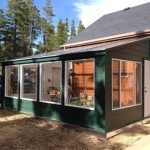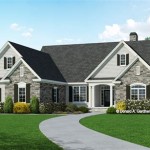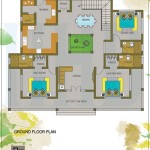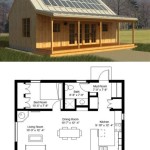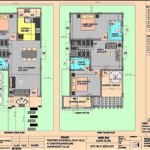Craftsman Small House Plans: Optimizing Space and Style
The Craftsman architectural style, born in the late 19th and early 20th centuries, emphasizes simplicity, functionality, and handcrafted details. This aesthetic has seen a resurgence in popularity, particularly in the realm of small house designs. Craftsman small house plans offer a compelling blend of efficient space utilization and timeless architectural beauty, making them an attractive option for individuals and families seeking a comfortable and aesthetically pleasing dwelling without excessive square footage. These plans often cater to various needs, from starter homes for young professionals to downsizing options for empty nesters.
Craftsman architecture typically incorporates distinctive features such as low-pitched gable roofs, wide overhanging eaves, exposed rafters, and prominently displayed porches supported by tapered columns. These elements are often adapted and scaled down in small house plans to maintain the characteristic Craftsman charm while fitting within a smaller footprint. The interior layouts prioritize open living spaces, efficient kitchens, and thoughtfully designed bedrooms and bathrooms. Material choices often reflect a connection to nature, with the extensive use of wood, stone, and natural textures contributing to the overall warmth and inviting ambiance of the home.
The appeal of Craftsman small house plans lies not only in their aesthetics, but also in their inherent sustainability. Smaller homes generally require less energy for heating and cooling, and the emphasis on natural materials aligns with environmentally conscious building practices. Furthermore, the focus on quality craftsmanship and durable materials ensures that these homes are built to last, reducing the need for frequent repairs and renovations. These factors contribute to the long-term value and appeal of Craftsman small homes.
Key Point 1: Defining Characteristics of Craftsman Small House Plans
At the core of any Craftsman design, regardless of size, lie specific architectural elements that define its character. These elements are carefully integrated into small house plans to maintain the style's authenticity while adapting to the limitations of a smaller footprint.
Exterior Features: The roofline is consistently a defining aspect. Low-pitched gable roofs are almost ubiquitous, often featuring wide overhanging eaves that provide shade and protect the exterior walls from the elements. Exposed rafters or decorative brackets are common under the eaves, adding visual interest and highlighting the handcrafted nature of the design. Front porches are a signature feature, often extending across the entire front of the house and supported by substantial, tapered columns, frequently resting on stone or brick piers. These porches serve as an inviting transition between the interior and exterior, fostering a sense of community and connection with the surrounding environment.
Windows are typically multi-paned and rectangular, often arranged in groupings to maximize natural light. Dormers may be incorporated into the roof to add headroom to upper-level rooms and provide additional natural illumination. The exterior cladding often consists of a combination of materials, such as horizontal siding, shingles, and stone or brick accents, creating textural variation and visual appeal. The color palette tends to be earthy and muted, with natural tones of brown, green, and gray predominating, further emphasizing the connection to nature.
Interior Features: Inside, the focus shifts to creating open and flowing spaces that maximize the use of available square footage. Open floor plans are common, particularly in the living and dining areas, allowing for flexible furniture arrangements and a sense of spaciousness. Built-in cabinetry and shelving are frequently incorporated to provide ample storage and organization, while also showcasing the handcrafted detailing that defines the Craftsman style. Fireplaces, often clad in stone or brick, serve as a focal point in the living room, adding warmth and ambiance to the space.
Woodwork is a crucial element of the interior design, with exposed beams, trim, and wainscoting adding character and texture to the walls and ceilings. Natural wood finishes are preferred, highlighting the beauty of the material and creating a warm and inviting atmosphere. Lighting fixtures often feature simple, geometric designs with warm-toned glass shades, complementing the overall aesthetic.
Material selection is also a defining characteristic. Natural materials, such as wood, stone, and brick, are favored for both the exterior and interior of the home. These materials not only contribute to the aesthetic appeal of the Craftsman style, but also ensure durability and longevity. The emphasis on quality craftsmanship and attention to detail is evident in every aspect of the design, from the carefully chosen hardware to the precisely fitted trim.
Key Point 2: Maximizing Space in Craftsman Small House Plans
Given the limited square footage of small houses, careful attention must be paid to optimizing space and creating a functional and comfortable living environment. Craftsman small house plans employ a variety of strategies to achieve this goal.
Open Floor Plans: Open floor plans are a cornerstone of successful small house design. By combining the living, dining, and kitchen areas into a single, flowing space, the perception of spaciousness is significantly enhanced. This allows for flexible furniture arrangements and facilitates social interaction. Strategic placement of furniture and rugs can help to define distinct zones within the open space without sacrificing the overall sense of connection.
Vertical Space: Utilizing vertical space is another effective way to maximize the usable area in a small house. Vaulted ceilings can create a sense of airiness and grandeur, while loft spaces can be used for sleeping areas, home offices, or storage. Staircases can be designed to be both functional and aesthetically pleasing, incorporating built-in shelving or storage beneath the steps. Tall windows and skylights can bring in ample natural light, making the space feel brighter and more open.
Multi-Functional Spaces: Designing spaces that can serve multiple purposes is crucial in small house design. A guest bedroom can double as a home office, with a daybed or sofa bed providing sleeping accommodations. A dining table can also serve as a workspace or a game table. Thoughtful planning and flexible furniture arrangements can transform a single room into a versatile and adaptable space.
Smart Storage Solutions: Storage is always a challenge in small houses, but clever design can make a significant difference. Built-in cabinetry, shelving, and niches can provide ample storage without taking up valuable floor space. Under-bed storage containers, wall-mounted organizers, and fold-down desks can also help to maximize space and keep clutter at bay. Utilizing vertical space for storage, such as tall cabinets and shelves, is particularly effective in small houses.
Outdoor Living Spaces: Extending the living space outdoors can significantly enhance the functionality and enjoyment of a small house. A well-designed porch, patio, or deck can provide an additional area for relaxing, entertaining, and dining. Incorporating outdoor seating, a dining table, and potted plants can create a welcoming and inviting outdoor oasis.
Key Point 3: Sustainable Design Considerations in Craftsman Small House Plans
The Craftsman ethos aligns naturally with sustainable design principles, emphasizing the use of natural materials, energy efficiency, and responsible building practices. Craftsman small house plans often prioritize these considerations, resulting in homes that are not only aesthetically pleasing but also environmentally friendly.
Energy Efficiency: Reducing energy consumption is a key goal in sustainable design. Craftsman small house plans often incorporate features such as high-performance windows and insulation, energy-efficient appliances, and passive solar design principles. Proper insulation helps to minimize heat loss in the winter and heat gain in the summer, reducing the need for excessive heating and cooling. Energy-efficient windows and appliances further reduce energy consumption. Passive solar design involves orienting the house to maximize solar gain in the winter and minimize it in the summer, further reducing the reliance on mechanical heating and cooling systems.
Material Selection: Choosing sustainable and locally sourced materials is another important aspect of environmentally responsible building. Craftsman small house plans often prioritize the use of reclaimed wood, recycled materials, and sustainably harvested timber. These materials not only reduce the environmental impact of the building process but also add character and authenticity to the design. Using locally sourced materials also supports the local economy and reduces transportation costs and emissions.
Water Conservation: Conserving water is another important aspect of sustainable design. Craftsman small house plans may incorporate features such as low-flow toilets and showerheads, rainwater harvesting systems, and drought-tolerant landscaping. Low-flow fixtures reduce water consumption without sacrificing performance. Rainwater harvesting systems collect rainwater for use in irrigation and other non-potable applications. Drought-tolerant landscaping reduces the need for irrigation, conserving water and minimizing maintenance.
Indoor Air Quality: Creating a healthy indoor environment is also crucial for sustainable design. Craftsman small house plans often prioritize the use of low-VOC paints, finishes, and adhesives to minimize the emission of harmful chemicals. Proper ventilation is also essential for maintaining good indoor air quality. Installing ventilation systems that exhaust stale air and bring in fresh air can help to reduce indoor pollutants and allergens.
Smaller Footprint: The very nature of a small house contributes to its sustainability. With less square footage to heat, cool, and furnish, the environmental impact is inherently lower than that of a larger home. This allows for a more sustainable lifestyle, reducing energy consumption, resource usage, and overall carbon footprint. The focus on mindful living and reduced consumption aligns perfectly with the principles of sustainable design.

Small Craftsman Cottage Plan 94371 At Family Home Plans In Our Best Ing Floor Collection Style House

House Plan 009 00121 Bungalow 966 Square Feet 2 Bedrooms 1 Bathroom Style Plans Craftsman

Classic Curb Appeal Standout Craftsman House Plans Blog Dreamhomesource Com

Craftsman Style House Plans Big And Small Houseplans Blog Com

Plan 001h 0124 The House

10 Small House Plans With Open Floor Blog Homeplans Com

Small Bungalow House Plans We Love Blog Dreamhomesource Com

The Dewfield Small Craftsman House Plan Plans Style
:max_bytes(150000):strip_icc()/SL-1870_FCP-17f67fde84454f06aac8ab0f8056c01b.jpg?strip=all)
20 Craftsman Style House Plans We Can T Get Enough Of

House Plan 76532 Craftsman Style With 1020 Sq Ft 2 Bed 1 Bath

